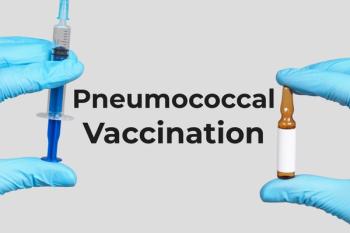
Edoxaban approved to prevent AF stroke and treat VTE
Edoxaban is an oral factor Xa inhibitor that prevents thrombin generation and platelet aggregation, and therefore thrombus formation.
Lindsay Hom
Diana SobierajIn January 2015, FDA approved edoxaban (Savaysa; Daiichi Sankyo) for prevention of stroke and systemic embolism in patients with nonvalvular atrial fibrillation (NVAF) and for the treatment of venous thromboembolism (VTE), following 5-10 days’ initial treatment with a parenteral anticoagulant.
Edoxaban is an oral factor Xa inhibitor that prevents thrombin generation and platelet aggregation, and therefore thrombus formation. Caution should be used with spinal puncture or neuraxial anesthesia, as there is risk of spinal and epidural hematomas. Edoxaban should be avoided in NVAF patients with a creatinine clearance (CrCl) >95 mL/min and in all patients with mechanical heart valves, severe mitral stenosis, or moderate-to-severe hepatic impairment. Edoxaban is contraindicated with active bleeding.
Efficacy
In the ENGAGE AF-TIMI 48 study, 21,105 NVAF patients with a CHADS2 score of at least 2 were randomized to receive edoxaban 30 mg daily (low-dose), edoxaban 60 mg daily (high-dose), or warfarin (goal international normalized ratio [INR] 2–3). A 50% dose reduction was implemented for patients with CrCl ≤50 mL/min, body weight ≤60 kg, or concomitant use of select P-gp inhibitors (verapamil, quinidine, dronedarone).
High-dose edoxaban was found non-inferior to warfarin on the basis of the primary efficacy outcome of time to first adjudicated stroke or systemic embolism in the modified intention-to-treat population (HR 0.79, 95% CI 0.63–0.99, P<0.001 for non-inferiority). Conversely, low-dose edoxaban was found inferior to warfarin for efficacy and is not an approved dose. The rate of ischemic stroke was significantly higher in patients with a CrCl >95 mL/min who were treated with high-dose edoxaban as opposed to warfarin (HR 2.16, 97.5% CI 1.17–3.97), which resulted in the manufacturer’s boxed warning that use of edoxaban should be avoided in this patient subgroup.
The HOKUSAI VTE study randomized 8,292 patients with acute symptomatic VTE initially treated with at least five days of open-label heparin to edoxaban 60 mg daily or warfarin (goal INR 2–3). Edoxaban was reduced to 30 mg daily for patients with the following: CrCl 30–50 mL/min, body weight ≤60 kg, or concomitant use of select P-gp inhibitors (see below). Patients were treated for 3–12 months, as determined by the treating physician.
A modified intention-to-treat analysis demonstrated non-inferiority of edoxaban to warfarin for symptomatic VTE, defined as the composite of recurrent DVT or new PE (HR 0.89, 95% CI 0.70 to 1.13, P<0.001 for non-inferiority). In subgroup analysis, no significant differences were found between edoxaban and warfarin in the incidence of symptomatic VTE when patients were stratified by CrCl at the time of randomization (CrCl 30-50 mL/min or CrCl >50 mL/min) (P=0.1581).
Safety
Compared to warfarin, high-dose edoxaban led to significantly less major bleeding, the primary safety outcome, in patients with NVAF (HR 0.80, 95% CI 0.70 to 0.91, P<0.001). When used for VTE treatment, edoxaban 60 mg compared to warfarin significantly reduced the primary safety outcome of clinically relevant bleeding, defined as the composite of major and clinically relevant non-major bleeding that occurred during or within three days of stopping treatment (HR 0.81, 95% CI 0.71 to 0.94, P=0.004). The most common adverse events in the ENGAGE AF-TIMI 48 trial were clinically relevant bleeding (11.1%) and anemia (9.6%). In the HOKUSAI VTE trial, clinically relevant bleeding (8.5%), rash (3.6%), and abnormal liver function tests (7.8%) were most frequently reported.
Dosing
Edoxaban is contraindicated in NVAF patients with a CrCl >95 mL/min. For patients with a CrCl of >50 to ≤95 mL/min, the recommended dose is 60 mg daily. Reduce the dose to 30 mg daily for patients with a CrCl of 15–50 mL/min. For VTE treatment, patients should receive edoxaban 60 mg daily. A reduced dose of 30 mg daily is recommended for patients with a CrCl of 15–50 mL/min, body weight ≤60 kg or who are prescribed concomitant use of certain P-gp inhibitors (verapamil, quinidine, macrolide antibiotics, oral itraconazole, and oral ketoconazole). Use of edoxaban with other P-gp inhibitors, such as protease inhibitors and cyclosporine, has not been studied. Avoid concomitant administration of rifampin, due to P-gp induction.
Edoxaban should be discontinued at least 24 hours prior to an invasive procedure and can be resumed as soon as hemostasis has been reestablished. The package insert provides instructions on transitioning to edoxaban from other anticoagulants and vice versa.
Lindsay Homis a PGY-1 pharmacy resident, Hartford Hospital, University of Connecticut School of Pharmacy, Hartford, Conn. Diana Sobierajis assistant professor, Pharmacy Practice, University of Connecticut School of Pharmacy, Storrs, Conn.
Newsletter
Pharmacy practice is always changing. Stay ahead of the curve with the Drug Topics newsletter and get the latest drug information, industry trends, and patient care tips.





















































































































































